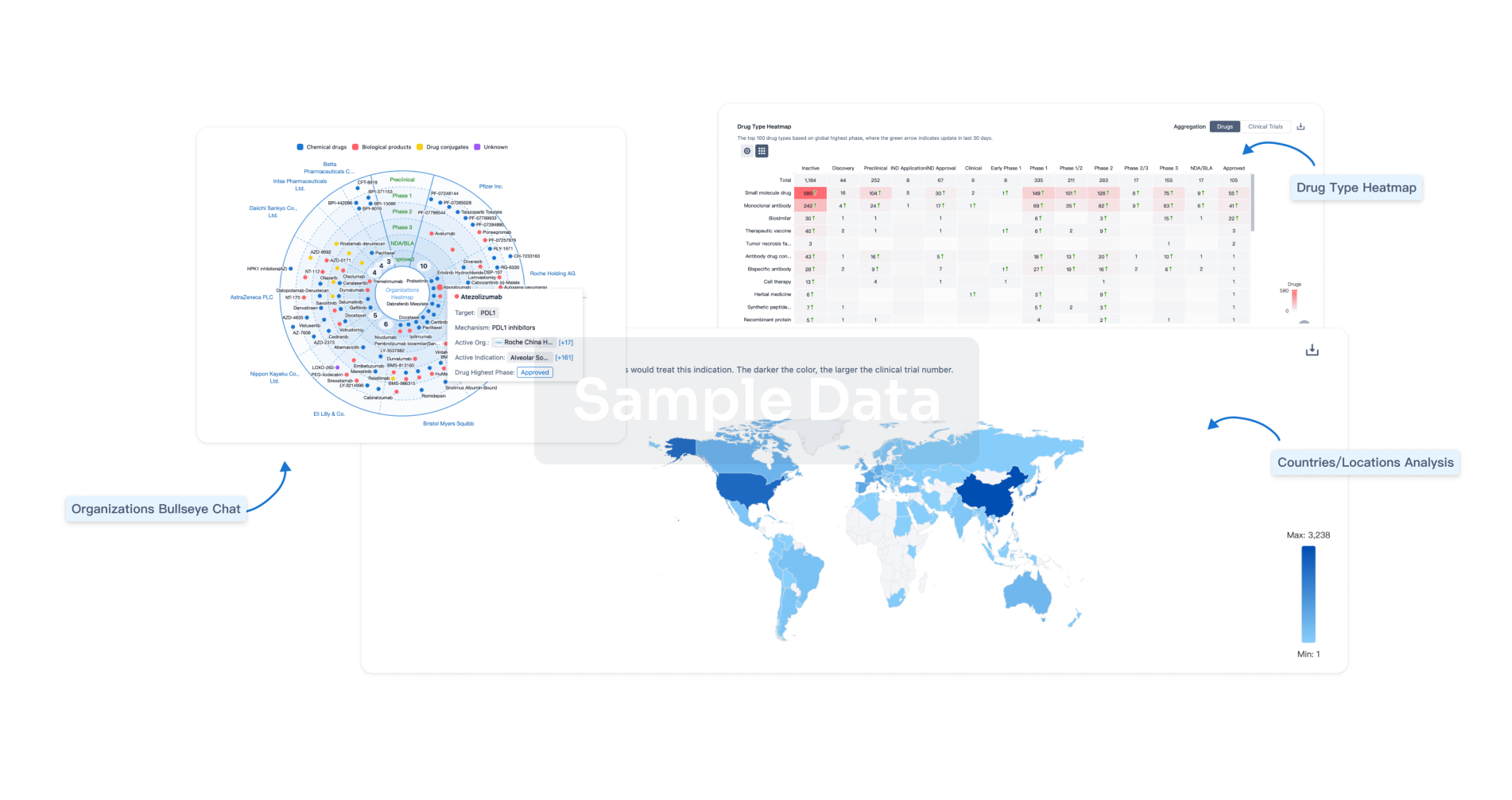Request Demo
Last update 08 May 2025
Quartan malaria
Last update 08 May 2025
Basic Info
Synonyms Malaria by Plasmodium malariae, Malaria, quartan, Malariae malaria + [15] |
Introduction Malaria resulting from infection by Plasmodium malariae. |
Related
1
Drugs associated with Quartan malariaTarget- |
Mechanism- |
Originator Org. |
Active Indication |
Inactive Indication- |
Drug Highest PhasePhase 1 |
First Approval Ctry. / Loc.- |
First Approval Date20 Jan 1800 |
13
Clinical Trials associated with Quartan malariaCTR20242902
单中心、开放、剂量递增、单次给药观察青蒿素硫酸羟氯喹片在健康受试者中的耐受性及药代动力学临床试验
[Translation] A single-center, open-label, dose-escalation, single-dose clinical trial to observe the tolerability and pharmacokinetics of artemisinin sulfate hydroxychloroquine tablets in healthy subjects
1、本研究选择健康受试者为试验对象,考察健康受试者单药给予青蒿素硫酸羟氯喹片的耐受性,确定最大耐受剂量(MTD)。
2、评价青蒿素硫酸羟氯喹片单次给药在健康受试者体内的药代动力学(pharmacokinetics,PK)特征。
[Translation]
1. This study selected healthy subjects as test subjects to investigate the tolerance of artemisinin sulfate hydroxychloroquine tablets to healthy subjects and determine the maximum tolerated dose (MTD).
2. Evaluate the pharmacokinetic (PK) characteristics of artemisinin sulfate hydroxychloroquine tablets in healthy subjects after single administration.
Start Date31 Jul 2024 |
Sponsor / Collaborator |
CTRI/2024/04/065866
Development and evaluation of diagnostic tool for differentiating tropical fevers using an artificial intelligence approach. - nil
Start Date15 May 2024 |
Sponsor / Collaborator |
CTRI/2023/01/049230
A Prospective Observational Study of profile of Select Acute Febrile Illness cases admitted to a tertiary care hospital - Nil
Start Date01 Feb 2023 |
Sponsor / Collaborator- |
100 Clinical Results associated with Quartan malaria
Login to view more data
100 Translational Medicine associated with Quartan malaria
Login to view more data
0 Patents (Medical) associated with Quartan malaria
Login to view more data
954
Literatures (Medical) associated with Quartan malaria31 Dec 2025·Emerging Microbes & Infections
Unprecedented large outbreak of
Plasmodium malariae
malaria in Vietnam: Epidemiological and clinical perspectives
Article
Author: Trung, Nguyen Kim ; Na, Byoung-Kuk ; Quan, Pham Minh ; Lê, Hương Giang ; Võ, Tuấn Cường ; Van, Tran Thi Hue ; Dung, Nguyen Cong Trung ; Nguyen, Do Van ; Nguyễn, Đăng Thùy Dương ; Vinh, Le Duc ; Quang, Nguyen Xuan ; Nguyễn, Thu Hằng ; Nhien, Nguyen Thanh Thuy ; Quang, Huynh Hong ; Kang, Jung-Mi ; Tam, Le Thanh ; Khanh, Chau Van
01 Apr 2025·Microbiology Spectrum
Differential
ex vivo
susceptibility of
Plasmodium malariae
and
Plasmodium falciparum
clinical isolates from Ghana and Mali to current and lead discovery candidate antimalarial drugs
Article
Author: Diakite, Ousmaila ; Sogore, Fanta ; Campo, Brice ; Dembele, Laurent ; Chirawurah, Jersley D. ; Maiga, Mohamed ; Ansah, Felix ; Maiga, Fatoumata O. ; Soulama, Alamissa ; Danwonno, Harry A. ; Amenga-Etego, Lucas N. ; Aniweh, Yaw ; Djimde, Abdoulaye A. ; Awandare, Gordon A.
01 Mar 2025·Travel Medicine and Infectious Disease
A case of imported Plasmodium malariae infection after treated Plasmodium falciparum malaria: Possible explanations and a review of the literature
Letter
Author: Boccolini, Daniela ; Zammarchi, Lorenzo ; Lanari, Alessandro ; Severini, Carlo ; Richter, Joachim ; Rossolini, Gian Maria ; Aiello, Andrea ; L'Episcopia, Mariangela ; Paggi, Riccardo ; Bartoloni, Alessandro ; Lapini, Manuela ; Malcontenti, Costanza ; Nencioni, Cesira
Analysis
Perform a panoramic analysis of this field.
login
or

AI Agents Built for Biopharma Breakthroughs
Accelerate discovery. Empower decisions. Transform outcomes.
Get started for free today!
Accelerate Strategic R&D decision making with Synapse, PatSnap’s AI-powered Connected Innovation Intelligence Platform Built for Life Sciences Professionals.
Start your data trial now!
Synapse data is also accessible to external entities via APIs or data packages. Empower better decisions with the latest in pharmaceutical intelligence.
Bio
Bio Sequences Search & Analysis
Sign up for free
Chemical
Chemical Structures Search & Analysis
Sign up for free

